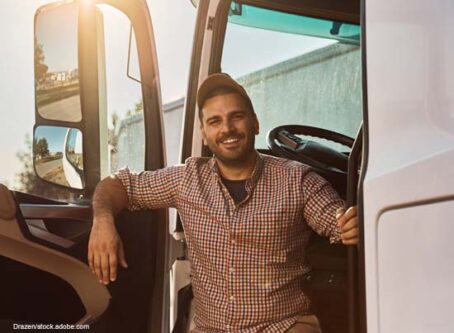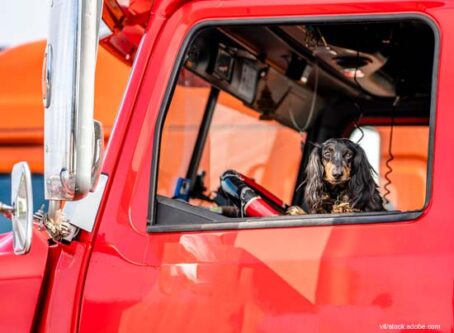A trucker’s view of autonomous trucks
If you listen to certain media reports about autonomous trucks, you’ll hear that this technology is the solution to all of our problems. Crashes will be a thing of the past, and efficiency will skyrocket, they’ll say.
In a recent segment from CNBC about the future of autonomous trucking, there’s some of that. But kudos to the cable channel for also getting a real trucker to weigh in on the subject.
OOIDA Board Member Doug Smith, an owner-operator from Utah, was interviewed for the segment and provided a level-headed perspective.
“I think there are tremendous opportunities for driver assist to improve safety and less driver fatigue,” Smith said. “But I cannot see 80,000-pound trucks in my lifetime running up and down the road as just harmless gentle giants.”
CNBC focused on Aurora, an autonomous vehicle company that has been operating with somebody in the driver’s seat but hopes to go driverless soon.
“Today, if you want to take strawberries from California to Dallas, it takes about three days,” said Chris Urmson, Aurora’s co-founder and CEO. “With the Aurora driver, you’ll be able to do that in about 24 hours.”
Proponents also touted safety. But let’s get real. This is about potential cost savings. In the segment, it is suggested that a truck would be able to increase its mileage per day from 450 or 500 miles to more than 1,000. It’s all about increasing profitability.
While the technology may provide some safety benefits, it also presents a lot of safety hurdles.
“Despite the various claims that autonomous vehicles will lead to zero deaths, there continue to be real-world situations in which automation has devastatingly failed,” the Owner-Operator Independent Drivers Association wrote in comments filed earlier this year to the Federal Motor Carrier Safety Administration. “While autonomous vehicles might improve safety under certain conditions, they create new risks with dangerous outcomes.”
Linda Allen, another OOIDA board member, shared some of her concerns with “60 Minutes” for a segment that aired in 2020.
“There are too many things that can go wrong,” Allen said during the segment. “I was on I-75 last month. There was a bad accident, and the state trooper came out and started hand-signaling vehicles, ‘You go here. You go there.’ How’s an autonomous truck going to recognize what an officer wants you to do? How’s that going to work?”
Smith was skeptical about the technology’s ability to operate in less-than-optimal weather conditions.
“You don’t see anyone talking about autonomous trucking north of Interstate 40, where the snow falls,” the Utah trucker said. “And the kind of trucking I do, I’m pretty sure it will never be replaced by autonomous trucks.”
Smith also spoke out against those who claim autonomous trucks are needed to solve a driver shortage.
“The driver shortage has been talked about forever, but it’s really a retention problem. Every year, there are 450,000 new CDLs (issued),” Smith said. “Many of them are called 90-day wonders because after 90 days, they’re like, ‘This is not for me.’”
Companies like Aurora, which reportedly lost $1.72 billion last year, are definitely motivated to roll out the technology as quickly as possible.
But let’s hope that regulators and lawmakers listen to truck drivers as they make decisions that will affect the industry for years to come.
“While we are still years away from fully automated trucks, decisions made today will have a significant impact on the deployment of autonomous vehicle technologies, ADS-equipped commercial motor vehicles, and, ultimately, on the livelihood of professional truck drivers and the economy at large,” OOIDA wrote. “Elected officials, federal regulators and our industry partners must develop autonomous vehicle policies in a responsible manner that considers the perspective of American truckers.” LL









